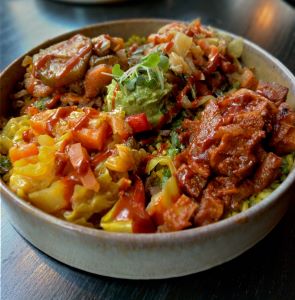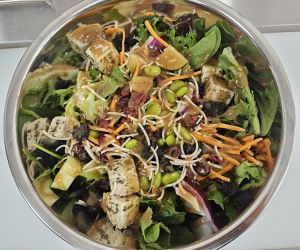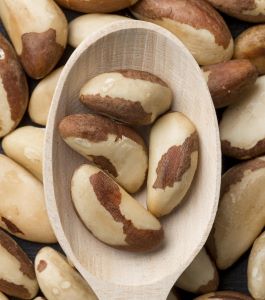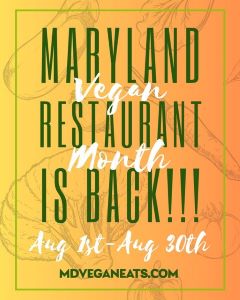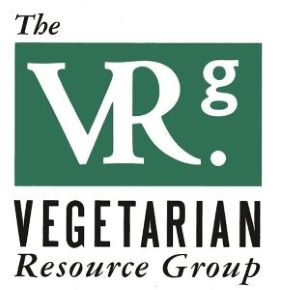Posted on
August 01, 2024 by
The VRG Blog Editor

By Jeanne Yacoubou, MS
In his book Regenesis, vegan author George Monbiot promotes precision fermentation (PF) as the high-tech solution to humanity’s need to discover a reliable and ample food source in a climate emergency.
Monbiot applauds Solein, protein-rich microbial biomass grown by bacteria able to use atmospheric hydrogen and carbon dioxide as their food. Remarkably, no photosynthesis–the photochemical process by which green plants make food–is required to produce it.
In this way, Solein is different from conventional plant and animal foods and PF recombinant animal proteins that are all dependent on the sun–either directly or indirectly–for their existence. Invented by the company Solar Foods, Solein is already an ingredient in food products on the market in Singapore. The company plans to expand globally.
Strictly speaking, PF, as defined as a transgenic method to produce animal proteins via microbes, is not used to produce the protein-rich microbial biomass called Solein. Solein is, however, produced in a bioreactor (fermentation tank) like recombinant (transgenic) animal proteins are.
As we noted in part 1 of this series on PF, bioreactors are energy-intensive. Their electricity requirements are on the same order of magnitude as those needed to produce meat and dairy proteins. This means manufacturing recombinant animal proteins by precision fermentation may take considerable energy, comparable to what it takes to produce meat and dairy proteins in confined animal feeding operations (CAFOs).
Monbiot uses Solar Foods’ energy usage data and a 2019 study to calculate 16.7 kWh of electricity needed to yield 1 kg (2.2 pounds) of protein. This value seems low considering that it’s even less than the theoretical minimum energy cost to manufacture protein: 17.8 kWh/kg of protein.
Using the 16.7 kWh/kg value, Monbiot further estimates that the protein needs of the global population could be met with only 11% of the world’s current electricity consumption.
In his book Saying NO to a Farm-Free Future, social scientist and farmer Chris Smaje questions Monbiot’s estimates based on a 2021 PNAS Study (Proceedings of the National Academy of Sciences) and his own calculations published on his blog. Smaje arrives at approximately 65.3 kWh/kg of protein using solar (photovoltaic) energy under optimal conditions.
This value does not include energy conversion inefficiencies which could, if Solar Foods were to use fossil fuel energy which they say they do not, make the final value 2-3 times higher. Nor does it include the energy to construct the bioreactors made of steel or the solar panels made with silicon, both energy-intensive materials.
In his book, Smaje calculates that meeting global protein needs today with Solein would require at least 43% of the world’s electricity consumption, 89% of the world’s low-carbon electricity (nuclear, hydropower, wind, and solar), or 924% of its solar energy supply.
How much protein can a hectare of land really produce?
The PNAS study cited above states that, under ideal conditions, a single hectare (~2.5 acres) of protein-rich microbial biomass production powered by solar energy could potentially yield 15 tons of protein annually. By contrast, the same study reports that an equivalent area of land cultivated with soybeans would produce only 1.1 tons of protein.
In terms of the energy needed to grow soybeans, Smaje estimates, using the PNAS study, relevant studies on soybean production, and recent USDA data, that it takes approximately 1.0 kWh of electricity to yield 1 kg protein from conventionally produced soybeans.
This is less than the energy required to power Solein manufacture. By extension, it’s also less than the energy needed to make transgenic animal proteins via precision fermentation or to produce conventional meat and dairy proteins.
Food calories from Solein
Although PF and microbial biomass companies talk about the value of their manufactured proteins, measuring the food calories of their products may be a better way to judge their potential to feed the global population if land can no longer yield sufficient crops in a climate crisis.
Based on data from the previously cited PNAS study, Smaje calculated in his book that to meet all of the global population’s calorie needs by Solein, it would require more than three times the world’s current electricity supply, more than eight times its current low-carbon electricity supply, or more than 91 times its current solar energy supply.
Aligned with this view of the unsustainability of microbial foods (in terms of energy requirements) is the opinion expressed in a 2023 article written by a food tech industry insider who stated that “…leading scientists and technologists…[say]–often in hushed tones, and sometimes only off the record–that the economics of food-grade precision fermentation is nowhere near competing with commodity dairy or eggs. This problem…will not be solved by simply upscaling to larger tank volumes. At best, scaling up production to immense tank volumes will reduce costs by 35% to 40% instead of the many fold reduction needed.”
Bioreactor contamination
Besides the high-energy requirements of bioreactors, the tanks are prone to contamination. This has proven to be a major stumbling block in scaleup efforts of similar technologies, such as lab-grown (cultured) meat. Precision fermentation will may face similar contamination problems until the industry undergoes major improvements in the near future. As a source of manufactured food ingredients, PF may also face other technological roadblocks as the cultivated meat industry is currently discovering.
Conclusions on microbial foods
Fermentation-enabled alternative proteins (FEAPs), also known as microbial or manufactured foods, are marketed as being an environmentally friendly and sustainable food source that will feed the human population when traditional agriculture cannot do so in a climate crisis.
Although generally there may be less land use with FEAPs, most require plant-based carbon feedstocks for the microbial growth media in which they are made. In a climate crisis, it will be difficult to produce–to feed eight billion humans–the needed quantities of corn or cane sugar to put in the media.
While growing cane sugar is especially environmentally destructive, both corn and sugar crops, when conventionally grown, require large amounts of synthetic pesticides and fertilizers. The heavy carbon footprints of these fossil fuel-based commodities are not included in the industry-funded life cycle assessments of FEAPs that we have seen. Although organic foodstuffs bear a comparatively lighter carbon footprint, they are not yet cost-competitive.
Given the limitations of today’s fermentation technologies, there may not yet be a way to avoid the extremely high energy requirements for manufacturing microbial foods. If that energy is produced by burning fossil fuels, the carbon footprints would be huge.
There are complex discussions when trying to meet the daily caloric needs of eight billion humans, while addressing the issues of economics, politics, ethics, nutrition, and environment. It will be interesting to watch as companies and scientists develop and debate the different approaches and opinions. Think about the development of home computers and the internet. In their early stages, who predicted which companies would end up becoming dominant, and how different problems would be solved?
The contents of this posting, our website and our other publications, including Vegan Journal, are not intended to provide personal medical advice. Medical advice should be obtained from a qualified health professional. We often depend on product and ingredient information from company statements. It is impossible to be 100% sure about a statement, info can change, people have different views, and mistakes can be made. Please use your best judgment about whether a product is suitable for you. To be sure, do further research or confirmation on your own.
